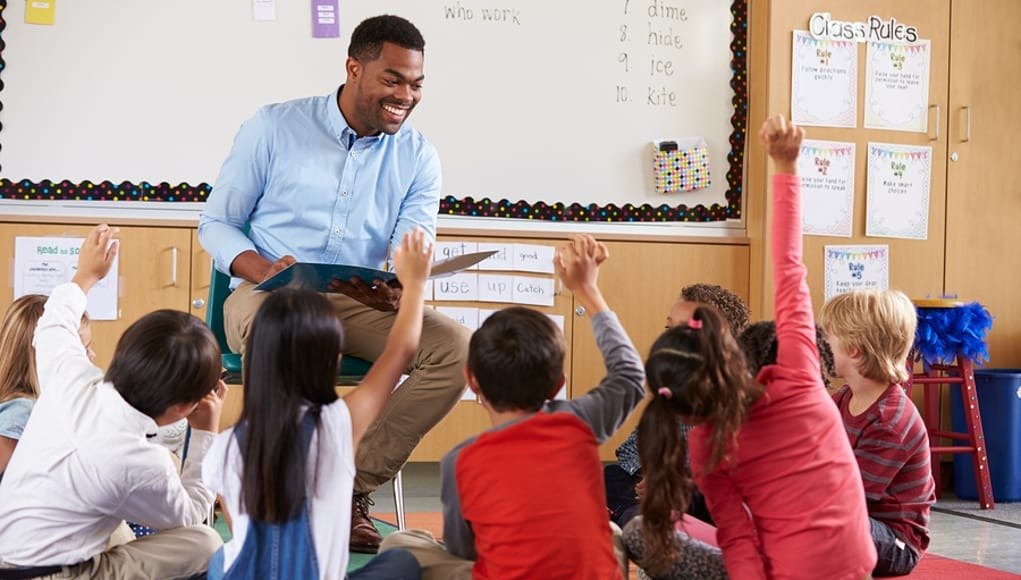5 Key Strategies for Effective Classroom Management: Tips for a Positive Learning Environment

Source:https://www.helpingteachertips.in/
Effective classroom management is key to fostering a positive and productive learning environment. It goes beyond maintaining order; it involves creating a space where students are engaged and motivated. Clear rules and a structured behavior plan help students understand expectations and participate more comfortably.
Establish Clear Rules and Expectations: Setting clear rules at the start of the school year is like creating a game plan. Just as knowing the rules of a game helps players perform well, clear classroom rules help students understand expectations and keep the class running smoothly. For instance, having a rule about raising hands before speaking can reduce disruptions and promote orderly behavior.
Consistency is Key: Consistency is crucial after setting classroom rules. Just like changing game rules can be confusing, inconsistent enforcement can lead to confusion and frustration in the classroom. By consistently applying rules, such as reminding students about homework deadlines, you’ll help them understand and adhere to expectations more effectively.
Involving Students: Involving students in setting classroom rules can increase their sense of responsibility and commitment to following them. By discussing and deciding on rules together, students feel more invested and engaged. This approach, along with clear and consistent rule enforcement, helps create a positive environment where everyone knows what to expect and is more involved in maintaining order.
Use Positive Reinforcement: Positive reinforcement is like giving a high-five for good behavior. When students receive recognition and rewards for their achievements, they are motivated to continue performing well. For example, a compliment for timely work encourages students to keep up their efforts, much like how praise from friends boosts your motivation to excel.
Variety of Rewards:Rewards don’t need to be elaborate; simple incentives like stickers, extra playtime, or verbal praise can be very effective. Varying rewards keeps students engaged and motivated, similar to the excitement of picking a prize from a treasure chest.
Avoid Over-Praising: Excessive praise can diminish its impact, making rewards feel less special if given too often. Just like a favorite snack loses its appeal with overconsumption, rewards should be reserved for significant achievements or efforts to maintain their value. By using positive reinforcement effectively—rewarding good behavior, varying rewards, and avoiding over-praise—you create a supportive and motivating classroom environment.
Tips for a Positive Learning Environment
Implement Engaging Lesson Plans: Active learning involves engaging students directly in lessons through interactive activities like group projects, discussions, or hands-on experiments. Instead of passively listening, students participate in activities, such as planting seeds while learning about plants. This approach makes lessons more exciting and helps students retain information better through active involvement.
Differentiated Instruction: Differentiated instruction tailors teaching methods to accommodate diverse learning styles and needs within a classroom. It involves adjusting content, processes, and products to ensure all students can access and engage with the material effectively. This approach helps address individual differences, allowing each student to learn in a way that suits them best.
Incorporate Technology: Technology can enhance learning by making it more interactive and enjoyable. Using apps, interactive websites, or educational games can make subjects like science or math more engaging. By incorporating technology into lesson plans, along with interactive and diverse teaching methods, lessons become more stimulating and effective, helping students understand and remember content better.
Develop Effective Classroom Routines: Daily routines are crucial for maintaining classroom organization and smooth operation. By having a consistent schedule, such as starting each day with the same activity or assigning specific times for subjects, students know what to expect and can focus better on their work. This structure helps create a more organized and predictable learning environment.
Transition Times: Transition times between activities can become chaotic, so having a plan helps maintain order. For example, a short, engaging activity like a quick stretch or a relevant game can ease the shift from one subject to another. This approach keeps students engaged and minimizes disruptions during transitions.
Classroom Procedures: Effective routines and procedures, such as using a homework drop-off box or having students raise their hands to ask questions, help maintain organization and clarity in the classroom. These practices ensure that students understand expectations and contribute to a smoother, more orderly learning environment.
Tips to Manage Misbehavior Calmly and Fairly
Stay Calm: Staying calm in the classroom is crucial for maintaining control and setting a positive example. Remaining composed helps manage situations effectively and keeps students focused and reassured. It also fosters a stable learning environment, where students feel more secure and are better able to concentrate on their work.
Fair Consequences: Consequences for misbehavior should be fair and consistent, meaning the same penalty applies to everyone who breaks a rule. For instance, if talking during a test results in a specific consequence, it should be enforced every time to help students understand expectations and encourage rule-following.
Conflict Resolution: Handling student conflicts can be managed effectively by having the students discuss the issue and express their feelings. For instance, if two students argue, allowing each to explain their side and collaborate on a solution can help resolve the situation. Combining calmness, fairness, and effective conflict resolution fosters a positive and orderly classroom where everyone can learn and grow.
Encourage Student Responsibility: Assigning students special jobs or roles, such as “classroom helper” or “line leader,” fosters a sense of importance and responsibility. These roles make students feel part of the team and encourage them to take ownership of their actions. For instance, a student responsible for passing out books learns to be organized and reliable.
Image Source:https://www.gettingsmart.com/





